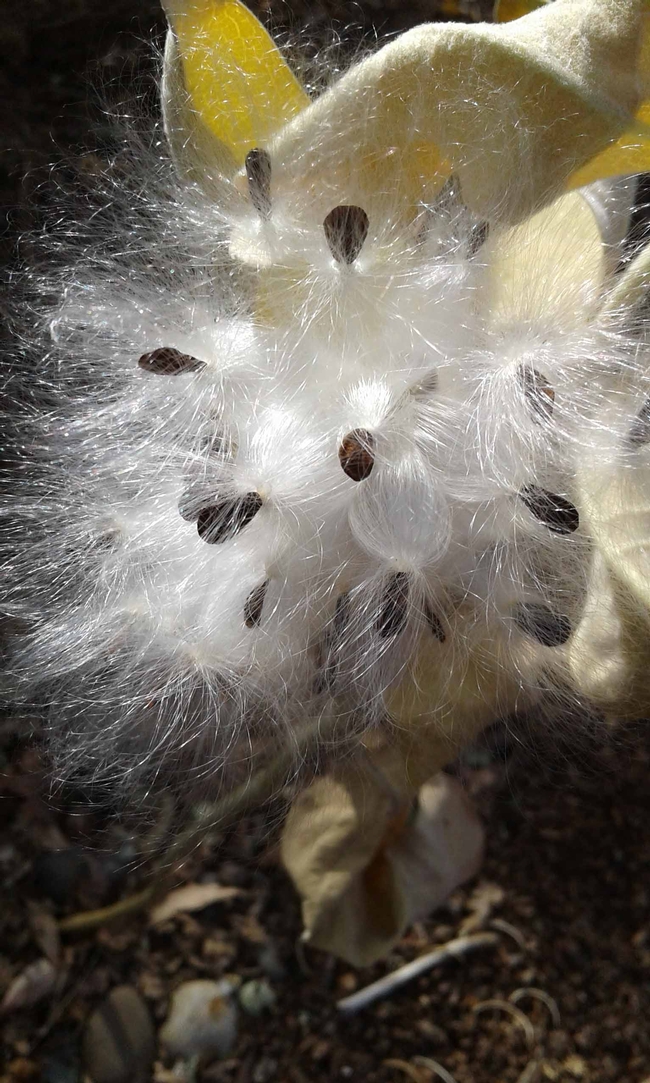By Kim Schwind, UC Master Gardener of Butte County, April 5, 2019
In recent months there has been disturbing news about the decline of the Western Monarch population. The North American Monarch Butterfly (Danaus plexippus) is a familiar and charismatic insect. It is known for its amazing migration and its reliance on one plant in particular: milkweed. 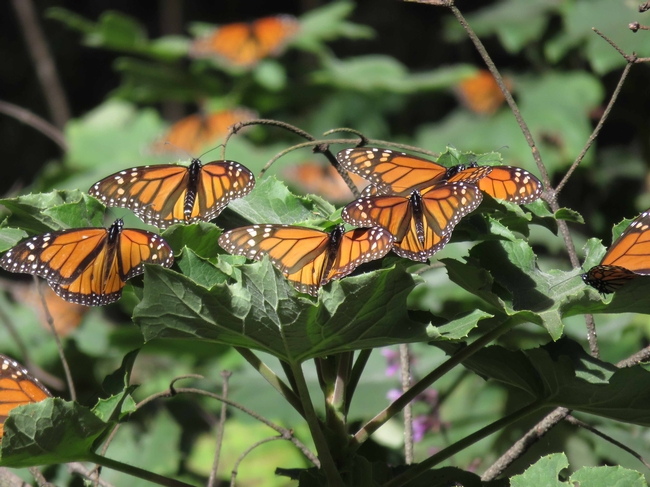
There are many hazards along the way. The monarchs that start their migration in the spring will not live long, so in order to lay their eggs they must locate a stand of milkweed. Once laid, it takes three to five days for the eggs to hatch into caterpillars. Monarch caterpillars feed exclusively on milkweed. They grow and molt through five developmental stages over a span of 14 to 18 days. Each caterpillar then spins silk attaching itself to a milkweed leaf or stem and forms a chrysalis (hardened outer protector). After about 10 days it emerges from the chrysalis as an adult butterfly. The lifespan of this adult butterfly is very short – just two to six weeks. In that time it feeds on nectar and continues the migration journey. It might take three or four generations to reach the end of the migration. The last generation (which has a lifespan of months rather than weeks) flies back to its ancestral start where it overwinters in large trees. In Pacific Grove, California they overwinter in a large grove of eucalyptus trees.
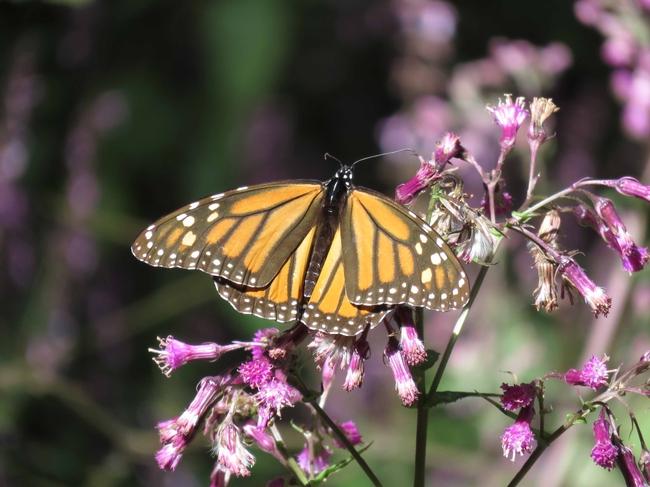
The reasons for Monarch decline are varied, and include habitat loss, disease and predation, use of herbicides and pesticides, and climate change.
What can be done to help these beautiful pollinators?
Backyard gardeners can help restore breeding and migratory habitat here in 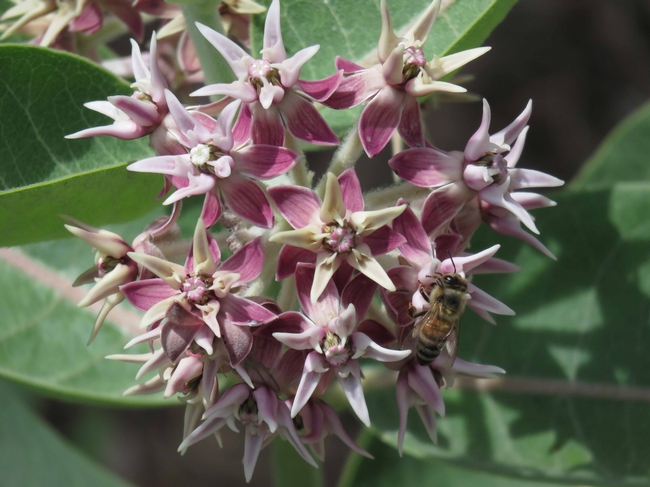
Milkweed is a perennial plant. It is named for its milky, latex sap. Milkweed is drought tolerant and deer resistant. The native species are not invasive. Milkweed plants develop large fleshy seed pods. When the seeds are mature, the pods pop open, freeing the seeds. Attached to the seeds are fine tufts of hairs (called pappus) which aid dispersal of the seeds: as the wind blows, it catches the silky hairs, carrying the seeds away from the plant. The seeds can be collected from the pods for later propagation or left alone to re-seed themselves.
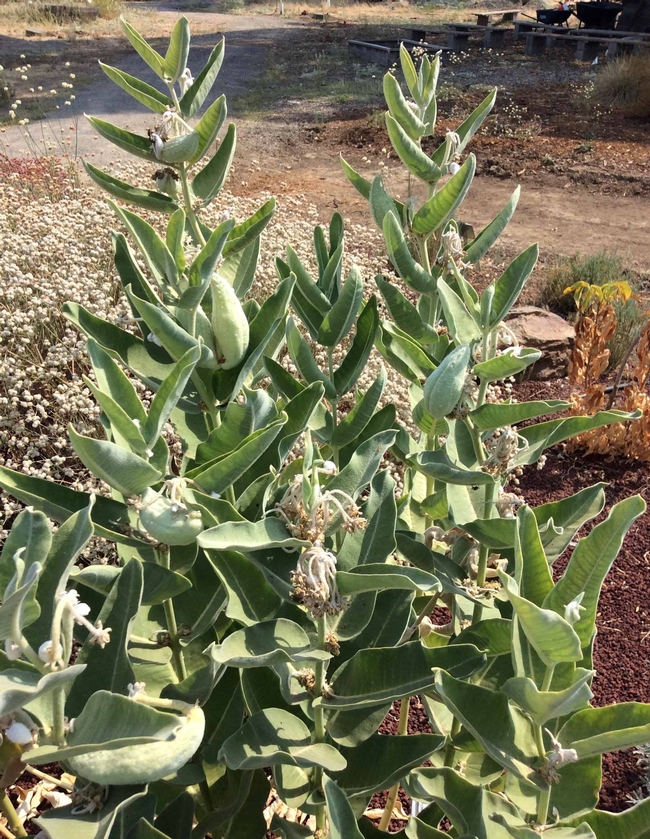
Home gardeners can aid the Monarch population by adding milkweed to their landscape, pollinator garden, herb garden, or even a patio container. If you own a larger plot of land you might consider letting some of it remain wild, so that the wild nectar producing flowers are available not only for butterflies, but for other pollinators as well. Hedgerows that include milkweed and nectar flowers are a wonderful way of attracting wildlife and pollinators. Creating a monarch way station (a garden that includes milkweed, nectar flowers and a water source) is a nice addition to a community or school garden.
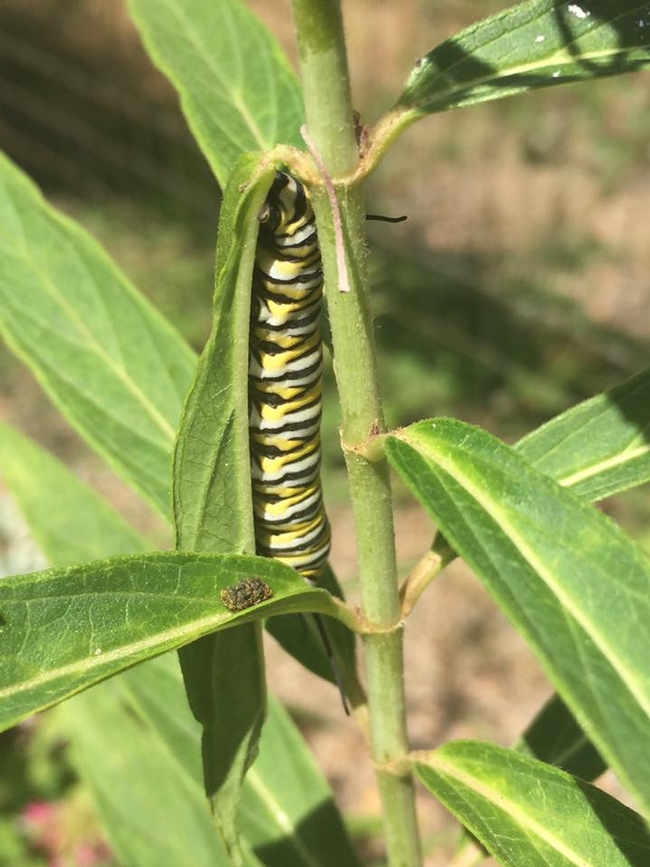
Milkweed is also a great host plant for many other beneficial insects including bees, beetles, and lady beetles (ladybugs). It will also attract a yellow aphid known as Oleander aphid. This aphid will not destroy the plant and it will not infest nearby roses or vegetable gardens. It is plant specific: think of the Oleander aphid as food for the lady beetles.
Avoid using pesticides or herbicides that might damage these breeding and feeding areas. Use caution where you plant the seeds, as milkweed can be toxic to livestock.
Area specific milkweed seeds can be purchased online. You can also find milkweed plants at our upcoming Master Gardener plant sale on Saturday, April 20th, from 10 a.m. to 2 p.m. at our Demonstration Garden at Patrick Ranch, located at 10381 Midway, Durham. For more information on the plant sale, see the Butte County Master Gardener website at https://ucanr.edu/sites/bcmg/
For more information on Monarchs and milkweed, visit the Xerces Society for Invertebrate Conservation. Their website also includes area-specific nectar plant lists.
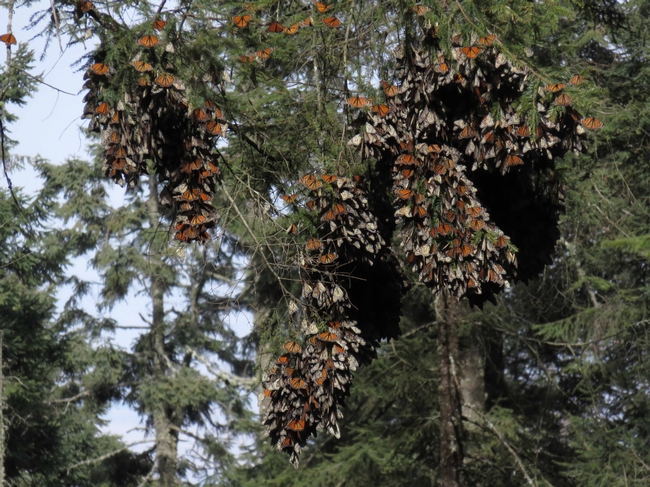
Finally, local butterfly experts highly recommend Monarchs and Milkweed: A Migrating Butterfly, a Poisonous Plant, and Their Remarkable Story of Coevolution by Anurag Agrawal (2017).An interview with Agrawal on this subject recently aired locally on the North State Public Radio program Cultivating Place, and is available as a podcast here.
For more information on gardening in our area, visit our website Butte County Master Gardener. If you have a gardening question or problem, call our Hotline at (530) 538-7201 or email us at mgbutte@ucanr.edu.
Attached Images:
